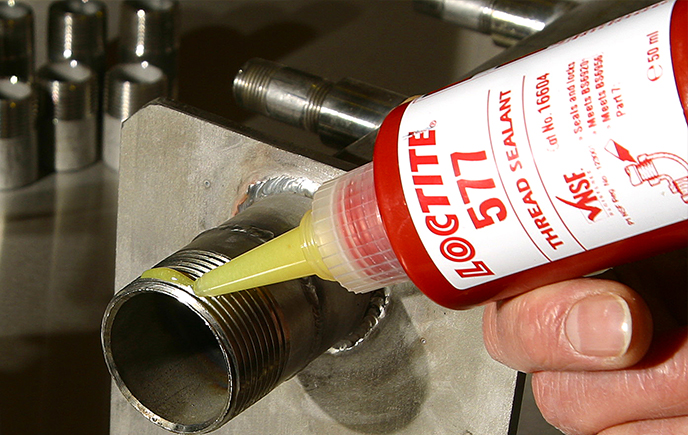Full steam ahead - Scottish distillery with Grundfos
There’s steam and there’s high-quality steam. There are pump solutions and intelligent pump solution...
It doesn’t take much to make a centrifugal pump break down. But that’s no consolation as you watch the downtime tick by and the costs of lost production rack up. Hopefully, knowing how easy it is to prevent simple problems becoming catastrophic failures will make you feel better.

A pump bearing failure, for example, is bad enough. Discovering it resulted from misalignment; that the misalignment was caused by loss of clamp load between assemblies; and that a simple loose fastener kicked off the whole chain of events, only makes it worse.
However, once you know the kind of common problems which occur with pumps and lead to failures, you can take simple steps to eliminate them. And few steps are as simple as using engineering adhesives at the right time in the right place.
Many components in the bearing frame and housing of a centrifugal pump will have air space between their threads. This may seem insignificant – and is unnoticeable during assembly – but every space represents the potential for an oil leak. The likelihood of a leak is even greater when there are changes in pressure.
Applying an anaerobic thread sealant not only solves this particular problem, but several others at the same time.
The sealant will prevent leakage through the fittings, which means the pump won’t run low on lubricant. It will help prevent loosening of the joint. And it will eliminate rust and corrosion within the thread space, which could otherwise lead to contaminants entering the oil. But what the sealant won’t stop is easy disassembly, if required, using ordinary hand tools.
The same type of thread sealant can also be used in other applications to prevent corrosion, such as within the gland flushing connector.
The cast parts of centrifugal pumps may have porous areas which were created during their manufacture. These can be a source of oil seepage unless they are dealt with preventatively.
Coating the interior of a bearing frame with a chemical resistant coating during assembly is one solution. By preventing seepage, this eliminates the danger of the pump running low on lubricant which, if not spotted in time, can lead to catastrophic failure.
Alternatively, if you can identify where the leak points are, a wicking grade thread locker will create an effective, leakproof seal.
Even oil seals themselves can be prone to leakage if there are small air spaces remaining around them. A thread locker is the answer here too. Applied to the outside diameter of the seal it will fill the spaces which might otherwise create a leak path.
As the name suggests, thread lockers are also a proven method of preventing self-loosening on threaded assemblies, from frame adapter mounting bolts to pump casing bolts and gland studs. They have the added benefits of preventing corrosion, ensuring the stability of couplings to prevent potential disengagement, and even preventing keyway wear by securing the key in the keyway.
Any exposed non-stainless steel or uncoated metal parts on a pump are liable to corrosion. And corrosion will ultimately lead to seizure. Potentially affected parts include power end bolts, lock nuts, and dowel pins which can seize within the bearing frame.
Treating the relevant parts with anti-seize products will provide protection, prevent problems, and mean one less potential source of pump failure and lost production.
One other potential cause of pump failure which can be eliminated altogether are cut gaskets. These have inherent problems, ranging from relaxation and shrinkage to extrusion and breakage – any of which can lead to leaks, which can in turn lead to pump failure. Of course you still need something to carry out the same function as a cut gasket, and the answer is a liquid gasketing adhesive.
This not only avoids all the issues with traditional gaskets listed above, but also seals any air spaces between parts. Liquid gaskets are particularly effective between the bearing frame and adapter, and between the stuffing box and pump casing.
For all the applications above, the Loctite® range of industrial adhesives is an effective way of ensuring you stick to best practice for proactively maximising pump efficiency.
Get the latest updates from ERIKS including:
Choose any or all of these via the ERIKS Subscription Centre!
Our Know+How brings together the best of the latest Know+How Hub articles in one easy to digest magazine, covering the following topics:
That's why its the leading magazine for maintenance engineers from ERIKS.
Want Know+How Magazine delivered direct to your door? Visit the ERIKS Subscription Centre to opt-in!
Take a look at our latest updates...
There’s steam and there’s high-quality steam. There are pump solutions and intelligent pump solution...
Looking for a custom Product quote? Need an answer to a Technical question? Looking for Careers/HR support? Want to work with us? Interested in our Digital Trading solutions? Have a finance question? Send us your enquiry and a member of the ERIKS team will be with you quickly.
We strive to deliver exceptional quality service and products. As part of this goal, we encourage customers to submit feedback on their experiences so we can resolve any issues and concerns.
At ERIKS we strive to deliver the best quality service and products. As part of this goal we encourage customers to submit feedback on their experiences so we can resolve any issues and concerns.
Call us: +441215086000
